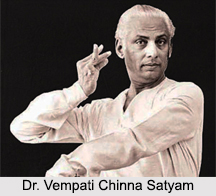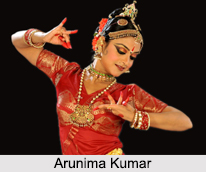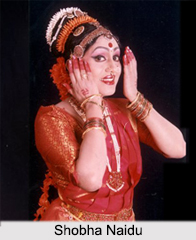 Kuchipudi dance, a classical Indian art form has originated in the state of Andhra Pradesh. Known for its graceful movements and intricate footwork, Kuchipudi embodies a rich cultural heritage. It showcases a harmonious blend of dance, music, and storytelling. The dance style is characterized by its expressive facial expressions, hand gestures (mudras), and swift, rhythmic footwork. Kuchipudi performances often depict mythological tales and devotional themes, captivating audiences with their emotive storytelling. The dance form continues to evolve while preserving its traditional essence, enchanting audiences worldwide with its elegance and artistry.
Kuchipudi dance, a classical Indian art form has originated in the state of Andhra Pradesh. Known for its graceful movements and intricate footwork, Kuchipudi embodies a rich cultural heritage. It showcases a harmonious blend of dance, music, and storytelling. The dance style is characterized by its expressive facial expressions, hand gestures (mudras), and swift, rhythmic footwork. Kuchipudi performances often depict mythological tales and devotional themes, captivating audiences with their emotive storytelling. The dance form continues to evolve while preserving its traditional essence, enchanting audiences worldwide with its elegance and artistry.
Kuchipudi dancers are the artists who perform the classical dance "Kuchipudi" which was originated in the village of Kuchipudi in Southern India. For a long time, the "Kuchipudi" dancers presented the art only at the temples and that too only during the annual festivals of certain temples in Andhra Pradesh.
History of the Kuchipudi Dancers
For centuries, Kuchipudi flourished as a magnificent dance form, garnering immense admiration and support from the rulers of the Deccan region. Among them, Tana Shah held Kuchipudi in particularly high regard, bestowing the lands surrounding Kuchipudi upon the Brahmins who practiced this exquisite art. Brahmins, positioned at the apex of the Indian caste system, held esteemed roles as teachers and intellectuals. Their performances of Kuchipudi at festivals and various events earned them great reverence, empowering them with influence over political and social affairs.
According to the tradition, the Kuchipudi dancers were only men at first and they all belonged to the Brahmin community. The Brahmin families who produced "Kuchipudi" dancers were popularly known as "Bhagavathalu" of "Kuchipudi". The very first group of Brahmain "Bhagavathulu" of "Kuchipudi" was formed in 1502 AD. The programs of these "Kuchipudi" dancers were offerings to the deities and they never allowed women in their groups.
However, in the 14th century, a saint called Siddhendra Yogi, codified the movements of "Kuchipudi" and enriched the popularity of the "Kuchipudi" dance form. Siddhendra Yogi is believed to be the pioneer of "Kuchipudi" dancers. "Kuchipudi" was next enriched by the advent of the female dancers.
Contributions of Shri Siddhendra Yogi
The name "Kuchipudi" finds its origins in the village of Kuchelapuram, situated near Vijaywada in Andhra Pradesh. It was Shri Siddhendra Yogi who played a pivotal role in shaping the Kuchipudi dance form, earning him the title of the “father of Kuchipudi danceâ€. Together with other esteemed scholars and artists, Siddhendra Yogi honed the techniques and refined the artistry of Kuchipudi, resulting in a visually captivating dance style characterized by its fluid movements and coherent storytelling.
Siddhendra Yogi, a remarkable scholar, spearheaded a revolution in the realm of Kuchipudi during the Bhakti Movement in India. Embracing the contemporary format of Yakshagana folk dance dramas, he breathed new life into the art form, merging principles from the Natya Shastra with folk traditions and classical elements.
In his critique of women`s training in Kuchipudi, Siddhendra Yogi expressed his belief that female dancers often exaggerated their expressions and emotions, inadvertently diverting the audience`s attention from the essence of the performance. As a result, male dancers came to dominate the Kuchipudi dance form, even assuming female roles in the plays.
Siddhendra Yogi`s contributions extended beyond choreography; he composed the renowned play "Bhamakalpam." This theatrical masterpiece revolves around Hindu deities, primarily Lord Krishna, and his companions Satyabhama and Rukmini.
Popular Kuchipudi Dancers
Following are the famous and popular "Kuchipudi" Dancers:
Guru Smt. Vijaya Prasad: Guru Smt. Vijaya Prasad is one of the most famous "Kuchipudi" dancers, who has been practicing and teaching "Kuchipudi" dance for the last 50 years. She started to learn this art form at a tender age of three by the great "Kuchipudi" Natya Acharya, Shri Vedantam Lakshmi Narayana Sastry. She has performed for more than 500 functions throughout India. She is best known for her own unique elegant and mellifluous style. Vijaya Prasad is the recipient of many prestigious awards like "Natya Sundra Kala Pravina" and others.
Dr. Vempati Chinna Satyam: Dr. Vempati Chinna Satyam is another Kuchipudi dancer, who established the "Kuchipudi Arts Academy" in Chennai that is specifically for "Kuchipudi" training. Through his dedication, talent and sheer hard work, he renewed and restored a diluted and cruder form of "Kuchipudi", forging a very personal and pure style. Today, because of him, "Kuchipudi" occupies a privileged position among other Indian classical forms.
Kalpalathika: Kalpalathika is a disciple of the reputed "Kuchipudi" dancer, Dr. Vempati Chinna Satyam. Kalpalathika comes from a cultured and respected family of Landlords of "Sirkali" in Thanjavur District, the birth Place of Saint Thirugnanasambandar. She made her debut at the Music Academy.
Raja and Radha Reddy: The world-famous dancing couple, Raja and Radha Reddy, has given a new dimension to the art of "Kuchipudi". The exceptional art of Raja and Radha Reddy received the official recognition like the award of the Padma Shree in 1984, the Sahitya Kala Parishad Award in 1990 and the prestigious Sangeet Natak Award in 1992. They have also had the honour of being awarded with the 2nd highest civilian award in India, the Padma Bhushan award of the new millennium, separately but concurrently in the year 2000. 
Kaushalya Reddy: She is considered as one of the most talented and famous artists of the "Kuchipudi". Kaushalya is a fantastic exemplar of the blending of a strong tradition with enthusiasm to experimentation through her intelligence and artistic values. Her representation of young "Prahlada" in a dance drama staged by Raja-Radha Reddy is still believed as brilliant by many art critics.
Yamini Reddy: Yamini Reddy learnt "Kuchipudi" from her parents and gave her first solo performance at the tender age of three in New Delhi that got her standing applause. She is the daughter of the famous Kuchipudi exponents, Raja and Radha Reddy in 1982. Yamini has been awarded with the Yuva Ratna Award, Youth Vocational Excellence award, FICCI young achiever`s award, Devadasi National Award, Sangeet Natak Akademi, Bismillah Khan Yuva Puraskar for dedication towards "Kuchipudi" Dance.
Bhavana Reddy: She is dedicated to learn "Kuchipudi" dance and music. Bhavana has a very good stage presence, with good expression that comes naturally to her. She is outstanding in the musical and the expressions part of "Kuchipudi" dance. She enacted the role of Prahlada in "Prahlada Charitam" at United States of America which got her large commendation.
Atisha Pratap Singh: She performed "Kuchipudi" dance in Namaste France festival in Paris in November 2016. She presented the dance with actress Pernia Qureshi in Delhi occasions in 2016 and 2017. She has also performed in Singapore. She has learnt the Indian classical dance from Raja and Radha Reddy.
Sreelakshmy Govardhanan: Sreelakshmy Govardhanan is a "Kuchipudi" artist in Kerala. Sreelakshmy is one of the extraordinary artists who have gone in exploration of the roots of "Kuchipudi" and has been auspicious to study it from the most genuine artist belonging to the "Kuchipudi Yakshagana". She has been portrayed as "a dancer who has connected the power of Abhinaya".
Haleem Khan: He is famous for his act of "Bhama Kalapam" and a variety of roles in "Annamacharya kirtanas". Haleem has presented more than 800 dance shows across the world, as well performed "Kuchipudi" workshops abroad.
Vyjayanthi Kashi: Vyjayanthi Kashi is an Indian Classical Dancer and a "Kuchipudi" proponent. Smt.Vyjayanthi Kashi is a reputed "Kuchipudi" dancer, a famous performer and choreographer along with an artistic director of a dance school Shambhavi School of Dance.
Prateeksha Kashi: Prateeksha Kashi is an Indian "Kuchipudi" dancer and a daughter of Vyjayanthi Kashi. She also got 1st Rank in junior "Kuchipudi" Dance Examination conducted by Govt. of Karnataka. Prateeksha Kashi recently got selected for Ustad Bismillah Khan Yuva Puraskar award by Central Sangeet Natak Akademi. She received the titles of Nalanda Nritya Nipuna instituted by the famous Nalanda Dance Research Centre and Nritya Jyoti to her credits.
Yamini Krishnamurthy: Mungara Yamini Krishnamurthy is a distinguished Indian dancer of "Kuchipudi". She has received many awards, including the Padma Shree, Padma Bhushan and Padma Vibhushan.
Arunima Kumar: Arunima Kumar has received the award of Sangeet Natak Akademi Yuva Puraskar for Kuchipudi in the year 2008. She has also performed in several ballets like the, Chitrangada Ballet, where she played the role of Chitrangada; Nala Damayanti, where she played the role of Damayanti. She is an established performer with the ICCR, Ministry of External Affairs and is an A grade artist of the All India Radio and Doordarshan.
Achuta Manasa: Achuta Manasa is a "Kuchipudi" dancer. Manasa has received several awards like Natyamayuri, Ugadhi Puraskaram, Kala Sravanthi, Natya Kalamai, NTR Memorial "Telugu Mahila Award" and international award "UNESCO Millennium Best Cultural Ambassador".
Shobha Naidu: Shobha Naidu is the leading "Kuchipudi" dancer. She has performed with her guru`s group in all over the country and abroad, shining in the roles of Satyabhama and Padmavati. She has received the title of Nritya Choodamani from Krishna Gana Sabha, Chennai. She has received the awards of Padma Shri, Sangeet Natak Akademi Award, Nritya Kala Siromani, Late Sri N T Rama Rao awards etc..
Uma Rama Rao: She was a "Kuchipudi" dancer and also the Founder and Director of Lasya Priya Dance Academy, established in 1985 in Hyderabad. She received the Sangeet Natak Akademi Award, National Senior Fellowship bestowed by the Department of Culture. She was honoured with the Sri Kala Poorna from Saint Annamacharya project of North America.
V. Satyanarayana Sarma: Vedantam Satyanarayana Sarma was the leading example of "Kuchipudi". He was recognized for his representation of female characters such as Usha, Satyabhama, Deva Devi, Mohini, Sasirekha and Gollabhama. He was a receiver of several honours including Kalidas Samman, Sangeet Natak Akademi Award and Sangeet Natak Akademi Fellowship and Padma Shri.
img src="https://www.indianetzone.com/public/admin/uploadImage/4_Shobha_Naidu_2.jpg" align="left" valign="absmiddle" style="margin-right:7px" alt="Kuchipudi Dancers, Indian Dance" border="1">



















